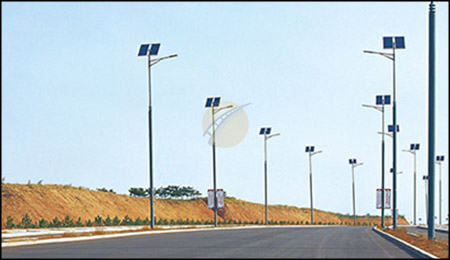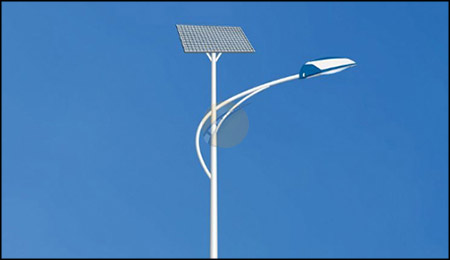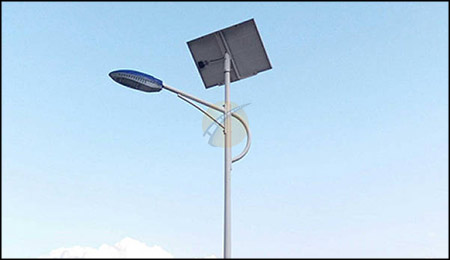Optimizing the Use of Solar Street Lights for Roadways
Aug 22, 2024
Solar street lights have emerged as a sustainable and cost-effective solution for illuminating roads and public spaces. They harness solar energy during the day and provide lighting at night, reducing the reliance on traditional energy sources and minimizing environmental impact. However, to maximize the efficiency and longevity of these systems, certain best practices should be followed. This article outlines the key considerations for effectively using solar street lights on roads.
The location of solar outdoor lights is critical for their performance. Since these lights rely on solar panels to capture sunlight, they must be installed in areas that receive direct sunlight for the majority of the day. Avoid placing them under trees, near tall buildings, or in shaded areas, as this can significantly reduce their energy absorption and overall effectiveness.
2. Proper Sizing and Design
Choosing the correct size of the solar panel and battery is essential. The system should be designed based on the local climate, the amount of sunlight available, and the specific lighting requirements of the road. Roads in regions with long winters or frequent cloudy days may need larger panels and batteries to ensure consistent performance.
* Solar Panels: Select panels that can capture sufficient solar energy even during less sunny days.
* Battery Capacity: Ensure the battery can store enough energy to power the lights through the night, even on days with minimal sunlight. 3. Optimizing Light Placement
3. Optimizing Light Placement
The spacing and height of solar led street lights should be strategically planned to provide uniform lighting across the road. Properly spaced lights will eliminate dark spots and enhance safety for drivers and pedestrians. The height should be adjusted according to the width of the road and the light’s intensity, ensuring adequate coverage without excessive overlap.
4. Maintenance and Monitoring
Regular maintenance is crucial for the long-term performance of solar street lights. Dust, bird droppings, and other debris can accumulate on solar panels, reducing their efficiency. Cleaning the panels periodically will ensure they continue to absorb maximum sunlight. Additionally, monitoring systems can be installed to track the performance of the lights and alert authorities to any issues such as battery failure or reduced energy storage.
5. Weather Considerations
Solar street lights must be durable enough to withstand extreme weather conditions. For instance, in regions prone to heavy snowfall, the design should ensure that snow does not accumulate on the panels. Wind resistance is also an important factor, especially in areas susceptible to storms. High-quality materials and sturdy designs are essential to ensure that the lights remain operational in harsh environments. 6. Incorporating Smart Technology
6. Incorporating Smart Technology
Integrating smart technology into solar street lights can significantly improve their efficiency and responsiveness. Features such as motion sensors, dimming capabilities, and remote control can optimize energy use. For instance, lights can be dimmed during periods of low traffic or turned on only when movement is detected, thereby conserving energy and extending battery life.
7. Community and Government Engagement
Engaging local communities and government authorities in the planning and implementation of solar street lighting projects can enhance their success. Public awareness campaigns can educate communities about the benefits of solar lighting and encourage proper usage and care. Government incentives and policies can also promote the adoption of solar street lights, ensuring widespread and consistent implementation. Effectively using solar road lights on roads requires careful planning, regular maintenance, and consideration of environmental factors. By selecting appropriate locations, optimizing system design, and incorporating advanced technologies, solar street lights can provide reliable, energy-efficient illumination that enhances road safety and contributes to a sustainable future.
Effectively using solar road lights on roads requires careful planning, regular maintenance, and consideration of environmental factors. By selecting appropriate locations, optimizing system design, and incorporating advanced technologies, solar street lights can provide reliable, energy-efficient illumination that enhances road safety and contributes to a sustainable future.
1. Selecting the Right Location
The location of solar outdoor lights is critical for their performance. Since these lights rely on solar panels to capture sunlight, they must be installed in areas that receive direct sunlight for the majority of the day. Avoid placing them under trees, near tall buildings, or in shaded areas, as this can significantly reduce their energy absorption and overall effectiveness.
2. Proper Sizing and Design
Choosing the correct size of the solar panel and battery is essential. The system should be designed based on the local climate, the amount of sunlight available, and the specific lighting requirements of the road. Roads in regions with long winters or frequent cloudy days may need larger panels and batteries to ensure consistent performance.
* Solar Panels: Select panels that can capture sufficient solar energy even during less sunny days.
* Battery Capacity: Ensure the battery can store enough energy to power the lights through the night, even on days with minimal sunlight.

The spacing and height of solar led street lights should be strategically planned to provide uniform lighting across the road. Properly spaced lights will eliminate dark spots and enhance safety for drivers and pedestrians. The height should be adjusted according to the width of the road and the light’s intensity, ensuring adequate coverage without excessive overlap.
4. Maintenance and Monitoring
Regular maintenance is crucial for the long-term performance of solar street lights. Dust, bird droppings, and other debris can accumulate on solar panels, reducing their efficiency. Cleaning the panels periodically will ensure they continue to absorb maximum sunlight. Additionally, monitoring systems can be installed to track the performance of the lights and alert authorities to any issues such as battery failure or reduced energy storage.
5. Weather Considerations
Solar street lights must be durable enough to withstand extreme weather conditions. For instance, in regions prone to heavy snowfall, the design should ensure that snow does not accumulate on the panels. Wind resistance is also an important factor, especially in areas susceptible to storms. High-quality materials and sturdy designs are essential to ensure that the lights remain operational in harsh environments.

Integrating smart technology into solar street lights can significantly improve their efficiency and responsiveness. Features such as motion sensors, dimming capabilities, and remote control can optimize energy use. For instance, lights can be dimmed during periods of low traffic or turned on only when movement is detected, thereby conserving energy and extending battery life.
7. Community and Government Engagement
Engaging local communities and government authorities in the planning and implementation of solar street lighting projects can enhance their success. Public awareness campaigns can educate communities about the benefits of solar lighting and encourage proper usage and care. Government incentives and policies can also promote the adoption of solar street lights, ensuring widespread and consistent implementation.





